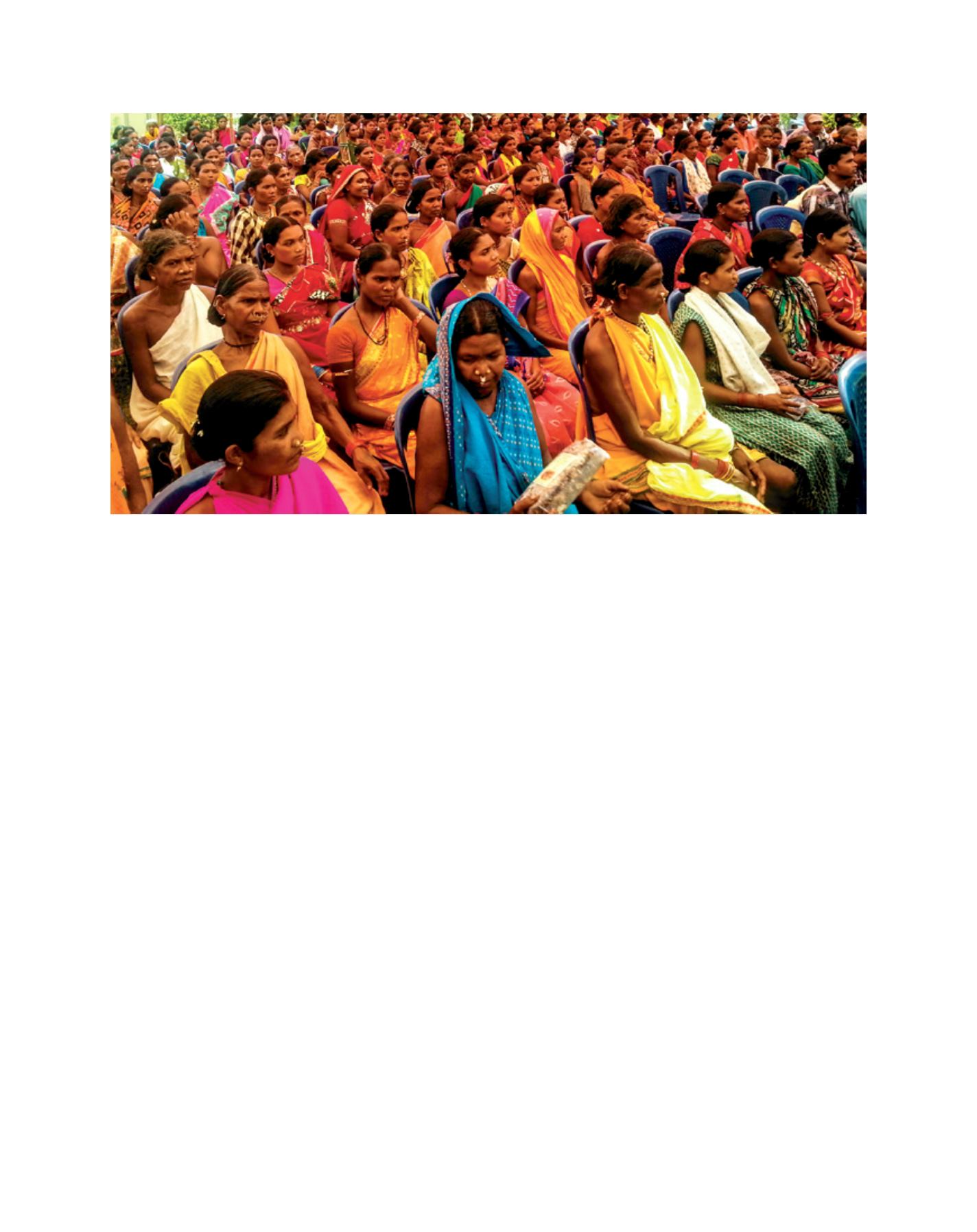

[
] 99
Development and promotion of new marketable millet products
Value chain building required specialized training on value-
added product development, maintaining consistent product
quality, packaging, labelling and marketing. The selected
members of SHGs were trained on value addition at agricul-
tural universities at Bangalore and Dharwad. This training
programme, planned and supported by MSSRF, empowered
village women for the production of 11 value-added items like
malt, rava and readymade mixes of millets.
Establishing and promotion of market for value-added
millets products
Though farmers have experience in marketing the primary
produce, they lacked capacity in marketing value-added
products. Through a gradual process members of SHGs
with marketing skills were identified and promoted to
undertake product marketing with local retail outlets. The
most popular and largely sold millet products were found to
be readymade mixes, milled rice of little millet and Italian
millet, and finger millet malt. Product differentiation and
branding were found to be important tools for obtaining a
competitive market position. Products are being marketed
in 15 districts in Tamil Nadu province under the brand
name Kolli Hills Natural Foods. To increase awareness of
the nutritional quality of millets and their derived prod-
ucts, MSSRF and SHGs are actively engaged in promoting
millet products through exhibitions at various forums.
Establishing community institutions for promotion of millets
MSSRF organized local farm women and men, who are more
enthusiastic in the cultivation and consumption of millets,
into SHGs and farmers’ clubs (FCs) under the umbrella of
a federation registered as a society – institutionalized into
the Kolli Hills Agrobiodiversity Conservers’ Federation
(KHABCoFED) in 2009. The current membership stands
at 47 SHGs and 62 FCs consisting of 1,511 members. The
SHGs were encouraged to build collective savings from
their income, carry out a financial lending service within
the group (often linked with local banking services), and
trained and supported to collectively undertake farming
related activities such as the promotion of millet cultiva-
tion. Either specific SHGs or members of different SHGs are
facilitated and promoted to undertake specific activities of
their interest, such as improved production practices, variety
selection, quality seed production, management of millet
processing units, grain procurement and transportation
to processing centres, and building the value chain. SHGs
in 15 villages, located in seven panchayats have their own
community seed banks and institutional system for regular
seed production, distribution and exchange. Over a period
of 12 years (2001-2013), the cultivation, procurement, value
addition, diversification and sale of products have generated
a gross income of US$30,900.
Traditional agricultural practices in Koraput
The Koraput district in Odisha state, India is renowned for
the genetic diversity of Asian cultivated rice and has been
considered as centre of origin of the Aus ecotype of rice
Oryza sativa
. This area is known as ‘Jeypore tract’ in rice
literature and has drawn the attention of rice biosystematics,
geneticists and conservationists for the last half a century.
This area is inhabited by many agrarian tribal communi-
ties, notably Bhatra, Gond, Paroja, Bhumia, Gadaba, Kandha,
Saora, Bonda and Koya who practice hill agriculture and
The PGUS farmers’ association, formed by the tribal community of Jeypore in Orissa, disseminates appropriate technologies to
conserve and enhance the production of local crops
Image: MSSRF
D
eep
R
oots
















